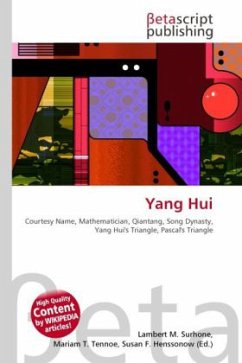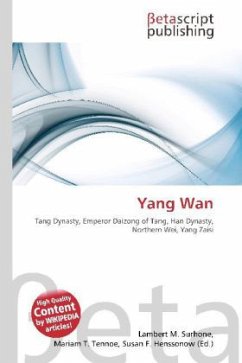High Quality Content by WIKIPEDIA articles! Yang Hui was a Chinese mathematician from Qiantang (modern Hangzhou), Zhejiang province during the late Song Dynasty (960-1279 AD). Yang worked on magic squares, magic circles and the binomial theorem, and is best known for his contribution of presenting 'Yang Hui's Triangle'. This triangle was the same as Pascal's Triangle, discovered by Yang's predecessor Jia Xian. Yang was also a contemporary to the other famous mathematician Qin Jiushao. The earliest extant Chinese illustration of 'Pascal's Triangle' is from Yang's book Xiangjie Jiuzhang Suanfa of 1261 AD, in which Yang acknowledged that his method of finding square roots and cubic roots using "Yang Hui's Triangle" was invented by mathematician Jia Xian who expounded it around 1100 AD, about 500 years before Pascal. In his book (now lost) known as Ruji Shisuo or Piling-up Powers and Unlocking Coefficients, which is known through his contemporary mathematician Liu Ruxie. Jia described the method used as 'li cheng shi suo' (the tabulation system for unlocking binomial coefficients). It appeared again in a publication of Zhu Shijie's book Jade Mirror of the Four Unknowns of 1303 AD.
Bitte wählen Sie Ihr Anliegen aus.
Rechnungen
Retourenschein anfordern
Bestellstatus
Storno








